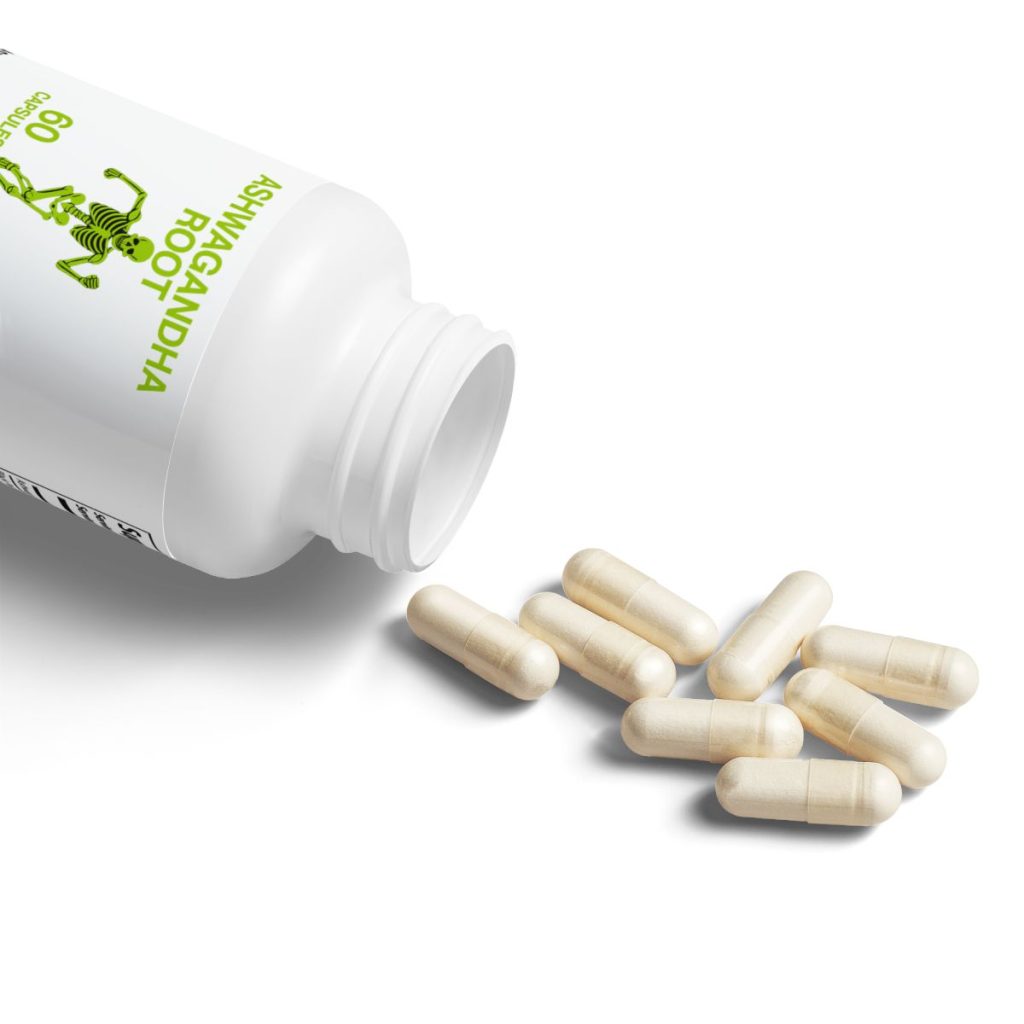The best ashwagandha is one of the most famous and central of Ayurvedic herbs, and for good reason. The odor of horse (‘ashwagandha‘ translated). Withania somnifera, known commonly as ashwagandha, Indian ginseng, poison gooseberry, winter cherry, or urine of the cows, is a plant in the Solanaceae / nightshade family.
Ayurveda, roughly translated into “Knowledge of life”, if which the magic herb is center in therapeutic measures to boost physical, mental, social, and spiritual harmony in order to improve the total quality of life. [x]
Several other species in the genus Withania are morphologically similar, which means at a microscopic, or not level, the anatomy or structure of the plant closely resembles that of other plants, in this case in the nightshade family.
The tomato is of the nightshade family. Cucumbers and peppers, too. ND normally goes very light on nightshades; peeling and de-seeding are very important with them because of the ‘lectins’ they carry. These lectins are proteins that act as splinters to sugar molecules that together create toxins that dull performance and cause signs of aging. The *could be bypassed by leaf-only consumption.
There are many a processes involved with eating from the garden, and they should be. It is like a video game after a while, trying to find the hidden way and unlock the power of nature and her armada of trillions upon trillions of species that work together as a divine organ playing the tune of life. We will never understand it all in this lifetime.
Ayurveda is the oldest surviving written system of healing and optimization. Popular herbs in today’s culture, such as the popular  root of turmeric or cousin ginger, are two other plants of the same family with similar morphological benefits.
root of turmeric or cousin ginger, are two other plants of the same family with similar morphological benefits.
The ND Sciences Group has been using each of them for temporary use treatment, not for regular use treatment.
The use of the best ashwagandha in Ayurvedic medicine extends back over 3000 to 4000 years to the teachings of an esteemed rishi (sage), Punarvasu Atriya.
It has been described in the ancient principle sacred texts of Ayurveda, including the Charaka and Sushruta Samhitas.
Ashwagandha is also used as an “adaptogen” to help the body cope with daily stress, lower blood pressure and as a general tonic to improve immunity.
Many don’t realize that when certain plants are used together they can unlock a new level of effectiveness.
Oftentimes these ‘together’ effects can be unlocked through the use of other plants such as the best hot peppers, other peppers, and black pepper.
Withania somnifera has been a principal ingredient in many herbal remedies and green juices, throughout time.
Let’s check out the best ashwagandha we can order up today and get it into our system tomorrow!
ASHWAGANDHA RANKINGS
BEST ASHWAGANDAH BY NUTRITIONAL DIVERSITY
ASHWAGANDHA BENEFITS
Treats Alzheimer’s and other neurological conditions, effects of HIV. [1,a]
A maximum stress relief agent, [2,a] and even a sleep-inducing aid. [3]
Striking antioxidant properties are contained in the miracle herb. [4]
Like the best gotu kola, the herb acts in many ways as a brain cell protector, displaying anti-cancer actions and compounds have neuroprotective effects against glutamate insult, a potential that may serve as a great supplement for brain health. [5,a,b] Also as a strong general anti-anxiety and oxidative stress reducer [c]
Anti-cancer activity is a main study of the best ashwagandha herb, and has been known as a cancer medication for a long time. [6,a,b,c] Key essence known as Withanone.
Hello ladies, the abracadabra vowel arranged herb enhances sexual function, atop all these other things. [7] The shrub has enhancing effects on the reproductive system overall. [8]
Also like gotu kola, the best damiana and many medicinal shrubs of her type, ashwagandha can be helpful to insomnia and nonrestorative sleep (NRS) issues. [9]
The Ayurveda staple even helps regulate correct body weight. [10]
Important brain activity changes have been noticed and evaluated in a really interesting study whereas mice were dosed with Scopolamine, an alkaloid from the Datura flower I have a little experience with that of many things that cause amnesia. Withania somnifera, the hopefully memory restoration ingredient. [11]
The blessing is anti-aging, and anti-free radical. [12] She is packed with serious vitality enhancing substances and steroidal compounds have been extracted from her seeds. [13]
Cognitive functional improvements and reaction time improvements have been well known for the power herb. [14,15]
The superfood has been the focus of regenerative health possibilities is an ongoing track of study. [16]
Glutamate neurotoxicity a cause of some stroke, head trauma, multiple sclerosis, and neurodegenerative disorders has pointed a search for herbal remedies. [17]
In the traditional system of medicine in India, the magic herb has been used to treat rheumatoid arthritis. This could surely be helped further by the addition of turmeric. [18]
The magic plant is traditionally used in treating epilepsy, depression, arthritis, diabetes, and palliative effects such as analgesic, rejuvenating, regenerating, and growth-promoting effects. [19]
examine the possible effects of ashwagandha root extract consumption on muscle mass and strength in healthy young men engaged in resistance training.
A great 8-week, randomized and prospective, double-blind, placebo-controlled clinical study using 57 young male subjects 18–50 years of age, with basic experience in resistance training who were then randomized into magicherbtreatment (29) and placebo (28) testing groups.
Testers in the ‘treatment’ group consumed 300mg of withania root extract twice daily, while the control group ate starch placebos.
This study reported that ashwagandha supplementation is concretely associated with and supportive of significant increases in muscle mass and strength and concluded suggesting that ashwagandha supplementation may be a powerful add-in fop a resistance training program. [20]
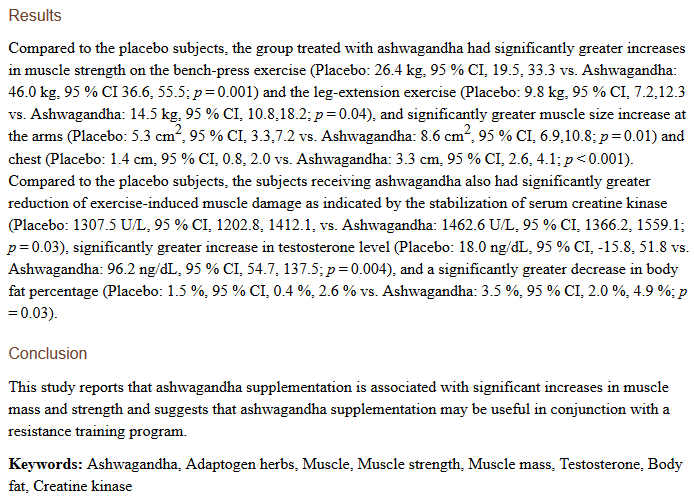
Overall vitality study finds in this 16-week, randomized, double-blind, placebo-controlled, crossover effects on fatigue, vigor, and steroid hormones middle-aged men, that 8 weeks of supplementation with an ashwagandha extract {Shoden beads, 600 mg daily delivering 21-mg withanolide glycoside} was indeed associated with significant improvements in salivary DHEA-S and testosterone production. [21]
An in-depth study on withania suggested her as a valuable natural drug for the treatment of cancers specifically carrying a p53Y220C mutation, which are the large majority of them. Using molecular docking tools and bioinformatics, they were able to test the herb against tumor suppressor p53 protein who is frequently mutated in a large majority of cancers. [22]
General wellbeing, sleep, and mental alertness during the day for elderly individuals is improved through the best ashwagandha supplementation of 600mg of extract per day. [23]
The herbs popularity also comes from the treatment of epilepsy, depression, arthritis, diabetes, and palliative effects such as analgesic, rejuvenating, regenerating, and growth-promoting effects. [24]
ASHWAGANDHA SIDE EFFECTS
Headache, sleepiness, and stomach upset have been reported in clinical studies when doses become very high. Remember to start slow with all things, rare allergic reactions are always possible.
Withania somnifera is regarded generally as very safe. [x,x]
ASHWAGANDHA EXPERIENCE
I use the shrub as much as possible, it grows at certain locations I visit it frequently. I am new to knowing her personally.
Ashwagandha ‘s History & Modern Use
Traditionally, ashwagandha has been given as a nerve tonic and adaptogen, which means as an agent to helps people adapt to various emotional and physical stressors.
It was classically used in India for nearly 5,000 years for conditions such weakness and debility in old age, hardships while young, constipation, insomnia, nervous conditions, stress, goiter, joint inflammation, parasites, hormone balance, and rheumatism – sort of a cure-all bring the overall system up herb. Good Nutritional Diversity diet plans want as many species with that feature as they can get in.
In old days a paste even made from the ashwagandha root, powdered then applied topically as a treatment to boils, cancers on the skin or gums, and other health threatening-looking tissue.
Ashwagandha is known to help people strengthen their immune systems after illness, chemotherapy, and surgery. It is a highly effective, evidence-based remedy to help reduce levels of stress and anxiety by lowering cortisol levels, and a plethora of other ways, to reach the end goal.
The scientist is quick to point out the presence of triterpene lactones, withanolides, withaferin A, alkaloids, steroidal lactones, tropine, and cuscohygrine, and other relatively powerful and recognized plant essences and chemicals realized form the laboratory dissection of the plant – something that in the pursuit of healing and performance anyway, is not necessary.
Alternative Use of Ashwagandha
Now people have matched the magic herb to a stack of conditions such as arthritis, anxiety, bipolar disorder, attention deficit hyperactivity disorder (ADHD), balance, obsessive-compulsive disorder (OCD), trouble sleeping (insomnia), tumors, tuberculosis, asthma, a skin condition marked by white patchiness (leukoderma), bronchitis, backache, fibromyalgia, menstrual problems, hiccups, tumors, tuberculosis, asthma, a skin condition marked by white patchiness (leukoderma), Parkinson’s disease, and chronic liver disease. It is also used to reduce the side effects of medications used to treat cancer and schizophrenia.
Like ginger, ashwagandha is said to reduce fat and sugar levels in the blood. A very similar list seems addressed by another shrub the same size; Ambrosia.
The soft two and a half foot shrub sometimes with small berry, is easy to grow in pots, and around the permaculture farm in sunny to partial, in dry stony earth. It has fury leaves and green parts and grows the orange to red fruit inside of a case that looks like the roof of the Kremlin, made from linen.
ASHWAGANDHA DISCUSSION
We ranked the best ashwagandha Withania somnifera, supplements to asses real source quality, refer the potent medicinal herb to clients as an alternative to other substances and to further our studies of plants and plant nutritional effects across I wider range of experiment and examination.
We looked hard at the warm looking herb whose fruits come in Kremlin-like domes that really help aerate and nutrify soil mixes, and we took time to consider what factors were important, and what factors were not while selecting the best Withania somnifera, herb source.
This is done by our company because we think one day the referrals could help us to provide this cutting edge information and because we need to find out and refer only the best product to our group of readers.
The Withania somnifera, is very applicable to the ND food combinations and ratios we have been working on in the last few years. She fits right in. We mark her high, on the demand list for our clients, permaculturists, athletes and general followers.
This is one of the ones we have spent a lot of time on.
Third-party testing of the substances available was required for ranking in this particular recommendation.
At least one hundred positive user statements are materials were the second requirement we had in this eval.
Anytime there is a good combination herb or benefits for any given substance we are sure to make mention of that. In this case turmeric for arthritis maybe jackfruit too, and damiana and or mango for energy and sexual performance and function restoration, gotu kola or dormilona (which acts more as a stimulant for me personally) for sleep and insomnia, and papaya for high-octane digestive capabilities and ginger for blood management. Black pepper, hot pepper, salt, oils and avocado can always improve uptake.
ASHWAGANDHA FAQ
Q: What is the best ashwagandha combination ND research is aware of?
A: The best damiana. The combination can be too much for some. Go slow. Haste makes waste.
Q. Can ashwagandha help me lose weight?
A. It can. If your body reacts to stress by gaining weight either through metabolic changes or through changes in appetite, the best ashwagandha can help immensely by helping to decrease stress.
Q: Does ashwagandha conflict with other herbs?
A: Surely to some degree of conflict there are a few out there, but in contrast thinking towards diversity and that natural lesson, the combinations we have found are the real focal point for this diva.
Q: Why the singing references?
A: Everybody is singing something no? I prefer honest songs. That is guaranteed in the plant world, and “if you grow them then you can know them.” They are always up for that, and they are always honest what more can you want?
Q: Is ashwagandha a topical herb?
A: One way to find out. Try it. To really get anywhere with nutrition one must remain forever experimental. Safe and logical but not totally in fear – this will get you nowhere. Fear is the Black Hole. Remember that. We will get back to you on this.
Q. What plant family is ashwagandha a member of?
A. Ashwagandha is a plant in the Solanaceae or nightshade family.
Q. What form of ashwagandha plant is it?
A. This ashwagandha plant is a short, tender perennial shrub attaining a height of 35–75 cm (14–30 in).
Q. What well known medicinal properties do ashwagandha possess?
A. The plant, particularly its root powder, has been used for centuries in traditional Indian medicine.
Q. How does ashwagandha look?
A. The ashwagandha plant has hairy branches extending radially from a central stem. Leaves are dull green, elliptic, size of which is up to 10–12 cm (4 to 5 in) long. The bell-shaped flowers are small and greenish. The fruit is orange-red.
Q. When does the ashwagandha plant mature and ready to be harvested?
A. Ashwagandha is ready to harvest in 5 to 6 months when flowers and berries start to form and leaves begin to desiccate.
Q. What kind of substance do ashwagandha also contain?
A. Ashwagandha contains withanolides, withaferin A, alkaloids, steroidal lactones, tropine, and cuscohygrine. Notably, withanolides are structurally similar to the ginsenosides of the ginseng family.
Q. What conditions are favorable for ashwagandha plants?
A. Ashwagandha is a drought-tolerant plant and grows in dry soil, once put down. Ashwagandha grows best when the temperature ranges between 70 F – 95 F (20 – 35 C).
Q. How does ashwagandha fame come about?
A. Ashwagandha is an important herb in Ayurveda, which is a form of alternative medicine based on Indian principles of natural healing.
Q. Does ashwagandha support heart health?
A. Ashwagandha has been shown to induce cholesterol- and triglyceride-lowering actions. This in turn will work for your heart, reducing cholesterol and lowering blood pressure altogether.
Q. What can ashwagandha do about the inflammation?
A. Various studies have been conducted and evidence has been pointing to that ashwagandha helps decrease inflammation by increasing the activity of natural killer cells.
Q. What other good benefits does ashwagandha give to bodies?
A. In studies, it has been shown that ashwagandha had boosted greater gains in muscle strength and size, while reducing in body fat percentage when compared with the placebo group.
Q. Does ashwagandha impact positively on male fertility?
A. It has been reported that ashwagandha increases testosterone levels and largely enhances sperm quality and fertility in men.
Q. Does ashwagandha possess calming effects?
A. Ashwagandha has been demonstrated to fight stress and anxiety in animal and human studies.
Q. Are there precautions for ashwagandha use?
A. Ashwagandha is a generally safe supplement for most people. Since its long-term effects are unknown, pregnant and breastfeeding women are advised to steer clear of its use. Autoimmune-deficient individuals, such as those who suffer from conditions like rheumatoid arthritis, lupus, Hashimoto’s thyroiditis, and type 1 diabetes should also consult with doctors before using it. It also has the effect of decreasing blood sugar and blood pressure levels, so medication dosages may need to be regulated if one takes it.
Q. What is the dosage suggested for taking ashwagandha supplement?
A. The common root extract is usually taken in 450–500-mg capsules once or twice daily.
ASHWAGANDHA RECAP
The best Ashwagandha is brain food and brain protectant.
She another anti-cancer wonder plant, and helps with overall female reproductive systems.
The magic herb may help arthritis. Use with turmeric.
She takes care of some stress too and can sing a song for insomniacs. Stabilize mood and anxiety.
This adaptogen helps people immensely with harsh, extreme, and difficult changes.
Throw some leaves from the magic herb and berry wonder in your water pitcher.
Great all-natural science-backed boost for muscle strength and recovery, as well as mass building.
Just give me the best ranked.
ASHWAGANDHA RELATED MATERIAL
Additional References,
- Deocaris CC, Widodo N, Wadhwa R, Kaul SC. Merger of Ayurveda and tissue culture-based functional genomics: inspirations from systems biology. J Transl Med. 2008;6:14
- Wermuth CG. Multitargeted drugs: the end of the “one-target-one-disease” philosophy? Drug Discov Today. 2004;9:826–827. doi: 10.1016/S1359-6446(04)03213-1.
- Patwardhan B, Warude D, Pushpangadan P, Bhatt N. Ayurveda and traditional Chinese medicine: a comparative overview. Evid Based Complement Alternat Med. 2005;2:465–473. doi: 10.1093/ecam/neh140
Originally Published Oct 19, 2019, Updated April 4 2013, Apr 4, 2020
Agriculture
NUTRITIONAL DIVERSITY SUPPLEMENTS
-

 Agriculture2 years ago
Agriculture2 years agoWhy Small Alternative Tropical Agriculture is the Best Investment Today
-

 Special Elements6 years ago
Special Elements6 years agoBest Garlic Vine Rankings, Benefits, Side Effects & Experience
-

 Special Elements3 years ago
Special Elements3 years agoBest Pre-Workout Supplement Rankings, Benefits, Side Effects & Experience
-
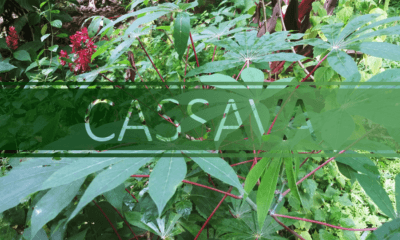
 Special Elements3 years ago
Special Elements3 years agoBest Cassava Manioc, Rankings, Benefits, Cancer Cure & Experience
-
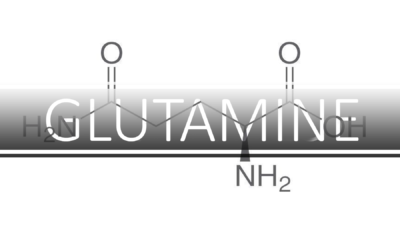
 Special Elements3 years ago
Special Elements3 years agoBest Glutamine Rankings, Benefits, Side Effects & Experience
-
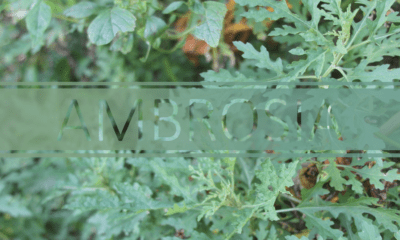
 Special Elements5 years ago
Special Elements5 years agoBest Ambrosia, Wormwood Rankings, Benefits, Side Effects & Experience
-
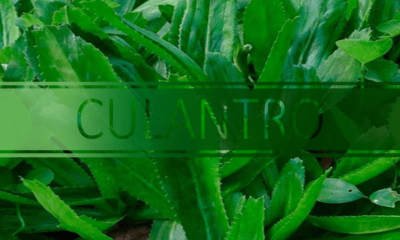
 Special Elements6 years ago
Special Elements6 years agoBest Culantro Rankings, Benefits, Side Effects & Experience
-
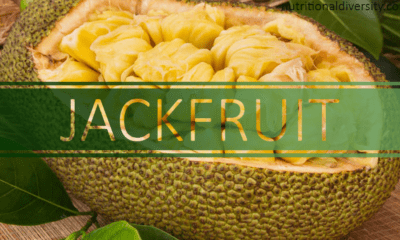
 Special Elements5 years ago
Special Elements5 years agoBest Jackfruit Rankings, Benefits, Side Effects & Experience

